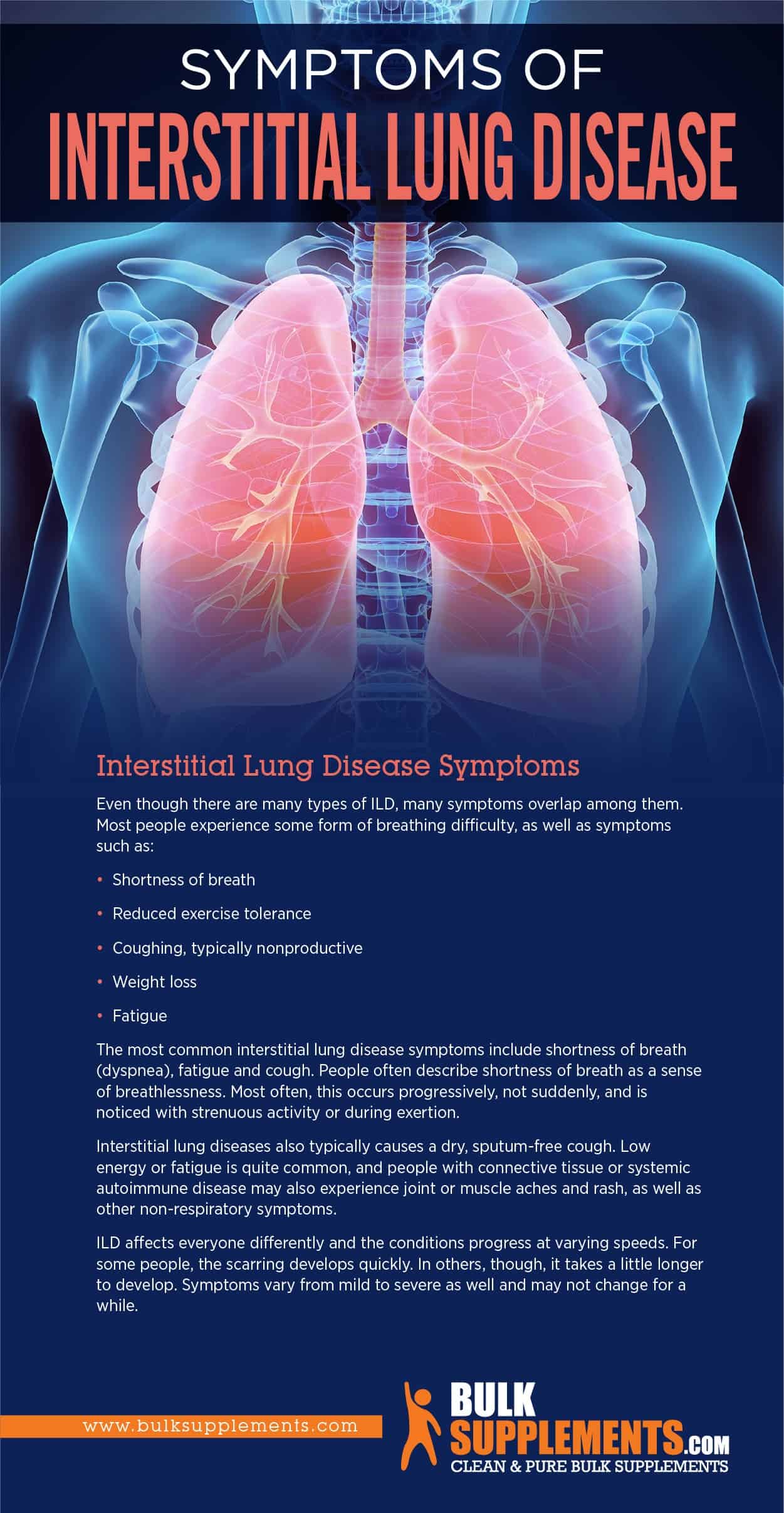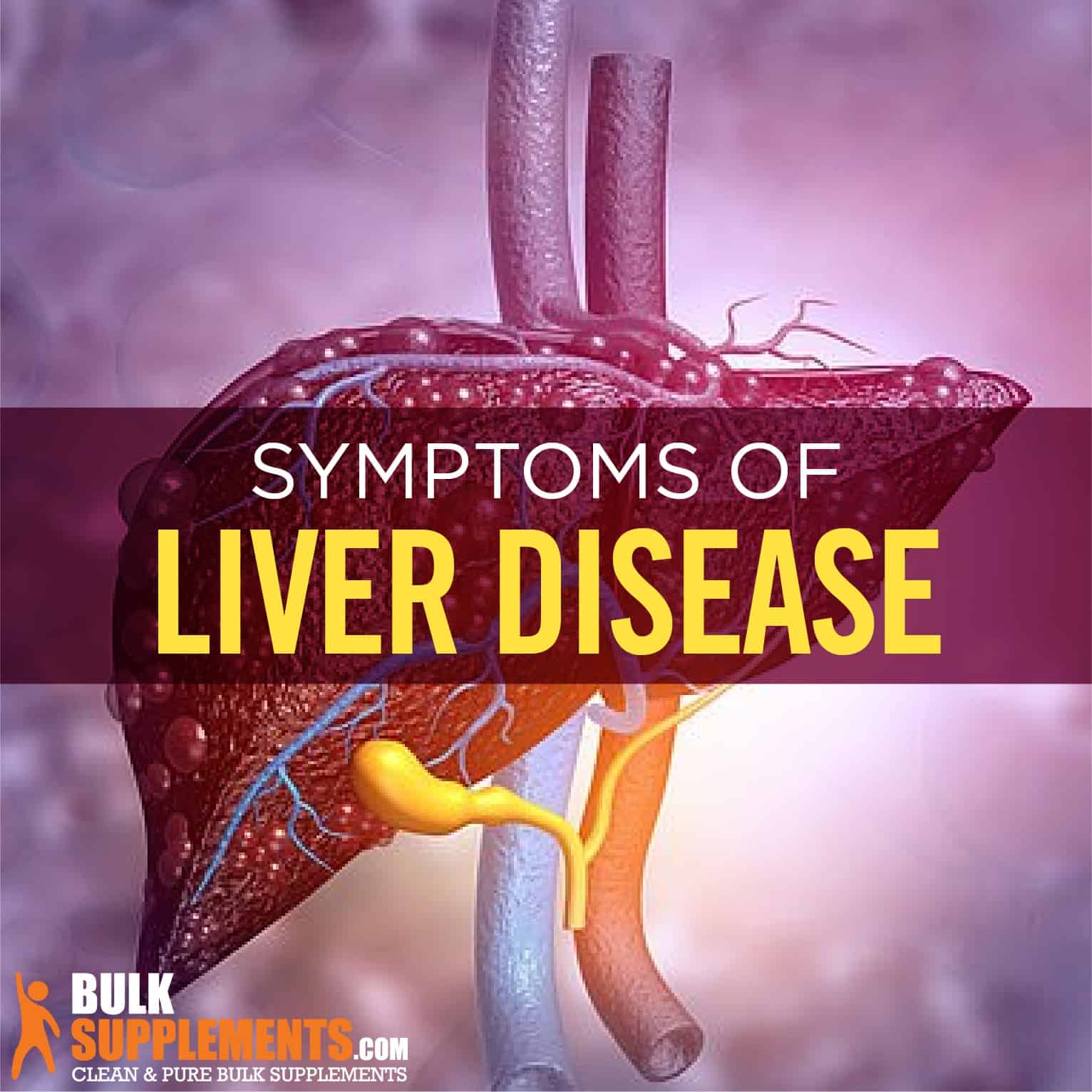Interstitial Lung Disease: Symptoms, Causes & Treatment

Interstitial Lung Disease
What is Interstitial Lung Disease?
Interstitial lung disease, or ILD for short, isn’t a lung condition itself, but a large collection of lung diseases. They affect the interstitium, which is the space and tissue around the air sacs of the lungs.
Interstitial lung diseases cause inflammation and scarring in the interstitium. This, in turn, can lead to progressive stiffness in the lungs, eventually impairing one’s breathing and reducing the oxygen sent to the bloodstream.
Interstitial lung disease encompasses many conditions and symptoms. In fact, they may not even have a known cause, or they may result from genetic factors, environmental factors or autoimmune diseases.
Types of Interstitial Lung Disease
There are over 200 different lung diseases that attack the interstitium, according to the American Thoracic Society. Some of these are incurable and chronic while others are rather minor. Examples include:
Idiopathic Pulmonary Fibrosis
This is chronic scarring of the interstitium without a known cause.
Cryptogenic Organizing Pneumonia
This interstitial lung disease may resemble pneumonia but without an infection.
Desquamative Interstitial Pneumonitis
This is extensive scarring in the lungs usually caused by heavy smoking.
Black Lung
Also known as coal worker’s pneumoconiosis, this lung condition is caused by breathing in coal dust.
Nonspecific Interstitial Pneumonitis
This is interstitium damage that often happens with autoimmune disorders, including rheumatoid arthritis or scleroderma.
Hypersensitivity Pneumonitis
This refers to inflammation due to sniffing irritating substances or allergens, including mold, chemicals, as well as animal and plant debris.
Acute Interstitial Pneumonitis
This is sudden interstitium damage that’s serious and usually requires emergency medical care and life support.
Interstitial Pneumonia
This lung infection occurs within the interstitium.
Sarcoidosis
This inflammatory disorder affects the interstitium. It can also cause problems with the eyes, heart, skin, nerves, and joints, as well as swollen lymph nodes.
Asbestosis
This is inflammation of the lungs or scar tissue caused by breathing in asbestos fibers.
Chronic Silicosis
This is a lung condition often tied to an individual’s workplace and caused by inhaling excessive silica dust.
Interstitial Lung Disease Symptoms
Even though there are many types of ILD, many symptoms overlap among them. Most people experience some form of breathing difficulty, as well as symptoms such as:
- Shortness of breath
- Reduced exercise tolerance
- Coughing, typically nonproductive
- Weight loss
- Fatigue
The most common interstitial lung disease symptoms include shortness of breath (dyspnea), fatigue and cough. People often describe shortness of breath as a sense of breathlessness. Most often, this occurs progressively, not suddenly, and is noticed with strenuous activity or during exertion.
Interstitial lung diseases also typically causes a dry, sputum-free cough. Low energy or fatigue is quite common, and people with connective tissue or systemic autoimmune disease may also experience joint or muscle aches and rash, as well as other non-respiratory symptoms.
ILD affects everyone differently and the conditions progress at varying speeds. For some people, the scarring develops quickly. In others, though, it takes a little longer to develop. Symptoms vary from mild to severe as well and may not change for a while.

Living with Interstitial Lung Disease
Breathing Matters, a project set up by the University College London Hospitals, compiled a list of lifestyle habits those with ILD can adopt (in consultation with their healthcare professionals) to cope with their condition such as:
- Fill up on vegetables and fruits and cut down on saturated fat
- Quit smoking to increase the amount of oxygen in your blood as well as lower your heart rate and blood pressure
- Try to engage in mental exercises
- Shed extra weight to boost your breathing capacity
- Work out to keep your body functioning as best as it can
- Avoid situations where you might catch lung infections from others
- Steer clear of excessive dust and pollutants
- Seek emotional support from family, friends, support groups and healthcare providers
- Be sure to get adequate rest and don’t overexert yourself
- Ensure that your immunizations are current
- Take vitamin D and calcium supplements to support bone health if you’re taking steroids for the long-term
Interstitial Lung Disease Causes
Anyone can develop interstitial lung disease, but it might be more prevalent among people with certain medical disorders, environmental hazards or drug use. The following risk factors can contribute to ILD:
Genetics
A genetic interstitial lung disease develops when a person inherits certain genes from one or both parents. Examples of these forms of ILD include Gaucher disease (characterized by lesions on bones and enlarged internal organs, such as the liver and spleen) and neurofibromatosis (growth of tumors on nerves).
Autoimmune Disorders
In cases of autoimmune disorders, the immune system attacks the body’s own healthy cells, ultimately modifying and destroying organ function. Autoimmune disorders that can attack the lungs include:
- Lupus
- Scleroderma
- Vasculitis
- SJogren syndrome
- Polymyositis
- Rheumatoid arthritis
- Mixed connective tissue disorder
- Dermatomyositis
Environmental Risks
Some occupations also put people at an increased risk of interstitial lung disease. Exposure to different pollutants or toxins can eventually harm the lungs. These substances include:
- Asbestos
- Silica dust
- Coal
- Mold
- Dust, like grain dust
- Iron welding
- Radiation treatments
- Clay minerals, like talc
- Some animal proteins, including those found in bird droppings
Medications
Certain medications can also impair the lungs in some people. Medications known to do this include:
- Chemotherapy drugs
- Heart medicines for treating irregular heartbeats
- Narcotics, such as heroin and the medication methadone
- Certain antibiotics
- Anti-inflammatory medications
Idiopathic Interstitial Lung Disease
Idiopathic means the cause of the interstitial lung disease is unidentifiable. This type of ILD is among the most common and more often affects people over the age of 60.
Treatment for Interstitial Lung Disease
Treatment for interstitial lung disease depends on the severity of the condition and specific ILD diagnosis.
Sometimes, a watchful waiting approach without drug treatment is suitable. When watching and waiting isn’t enough, many forms of interstitial lung disease can be successfully treated with medicines. Some medicines are only suitable for certain types of ILD and not others.
No matter the cause of ILD, the aim of treatment is to:
- Manage or minimize possible complications of interstitial lung disease
- Eliminate the source of the issue, when possible
- Lower inflammation and stop the formation or progression of scarring of the lungs
- Improve one’s quality of life or keep it from deteriorating
Medications for ILD
If you’ve been diagnosed with interstitial lung disease, there are several medications that your doctor might prescribe.
Anti-Inflammatory Medications
While some anti-inflammatory medications can harm the lungs, others might help ease symptoms. One good example is prednisone, a corticosteroid.
Corticosteroid therapy can be helpful for various forms of ILD, but it does cause some side effects.
Antifibrosis Medications
Antifibrosis or anti-scarring medications are a newer drug class that work by blocking pathways in your body that are used in the formation of scar tissue.
These medicines are used to treat idiopathic pulmonary fibrosis — the form of ILD with no known cause.
Some examples of these drugs include Esbriet (pirfenidone) and Ofev (nintedanib), which are currently being reviewed for their usefulness in other forms of ILD.
Oxygen Therapy
People with ILD may be prescribed oxygen therapy to help lower breathlessness and improve their ability to stay active. A recent research review, however, questions the effectiveness of oxygen therapy in the long-term treatment of people suffering from interstitial lung disease.
Pulmonary Rehabilitation
Many doctors recommend pulmonary rehabilitation to help support the lungs. It involves a variety of exercises to help a person stretch their lung volume and breathe better.
SEE ALSO

Liver Disease: Symptoms, Causes & Treatment
A recent study looked at how pulmonary rehabilitation could be useful for people with different forms of interstitial lung disease. At the end of the study, pulmonary rehabilitation did, in fact, prove to be useful for improving symptoms of ILD, improving quality of life and increasing exercise tolerance.
Lung Transplant
Conditions that are progressing rapidly or are severe may call for a lung transplant. Your doctor will want to ensure that you’re healthy enough and have no other health conditions before suggesting a lung transplant.
Supplements for Lung Health
A variety of supplements may help improve general respiratory health and/or ILD symptoms by reducing lung scarring or inflammation. Supplements are not a cure and if you’ve been diagnosed with any medical condition, it’s important to consult with your healthcare provider before taking them. These dietary supplements include:
NAC (N-Acetyl L-Cysteine) Powder
N-acetyl L-cysteine synthesizes a vital antioxidant known as glutathione. It promotes digestion, supports healthy liver function and may support respiratory function.
It’s suggested that you take 600 milligrams of N-acetyl L-cysteine up to thrice daily, or as recommended by your doctor.
Beta Glucan Powder
Beta glucan provides a variety of benefits, the most important of which is immune system support. It may be useful in lowering overall cholesterol and is naturally present in baker’s yeast.
Beta glucan should be taken in a dose of 250 milligrams once a day with food, or as suggested by a doctor.
Cordyceps Powder
Pure cordyceps powder is derived from a mushroom that provides an anti-aging boost and increases athletic performance. Studies show it also can help prevent lung fibrosis in cases of ILD.
Take 1,500 milligrams of cordyceps powder twice or thrice daily, or as recommended by a physician.
Nattokinase Powder
Nattokinase comes from natto, a Japanese food derived from soybeans. The supplement may benefit vascular health and promote strong bones.
Nattokinase should be taken in doses of 100 milligrams 1-3 times daily, depending on your desired effect.
Nettle Powder
Nettle extract powder promotes bladder and digestive health and may also ease allergy symptoms. It also promotes healthy, clear skin and improves hair growth.
Unless allergic to nettle, take 750 milligrams of nettle powder once or twice a day, or as suggested by your doctor.
Marshmallow Root Extract Powder
This natural anti-inflammatory may help ease symptoms of cold and flu, supporting the immune system and preventing infections. It can also relieve stomach pain.
The ideal dose of marshmallow extract is 1,200 milligrams, taken one or two times daily.
The Bottom Line
Interstitial lung disease refers to a broad class of over 200 lung diseases that are marked by inflammation or scarring (fibrosis) of the lungs, making it difficult to get adequate oxygen. This not only causes fatigue, dry cough and shortness of breath, but it may even be life-threatening.
ILD can be brought on by many different things. Exposure to chemicals, genetics and autoimmune conditions are some of the underlying causes. Oftentimes, though, no cause can be identified, in which case ILD is considered idiopathic.
Interstitial lung disease treatment depends on the cause and severity of the condition. Medications can help someone breathe more easily and slow down lung damage. In severe cases, however, doctors may recommend a lung transplant. In consultation with a healthcare professional, even dietary supplements can be part of an overall treatment strategy.



